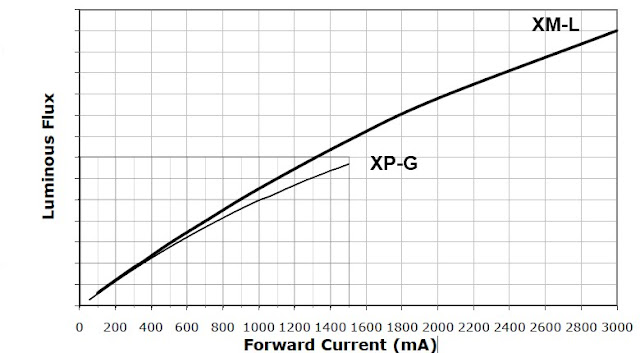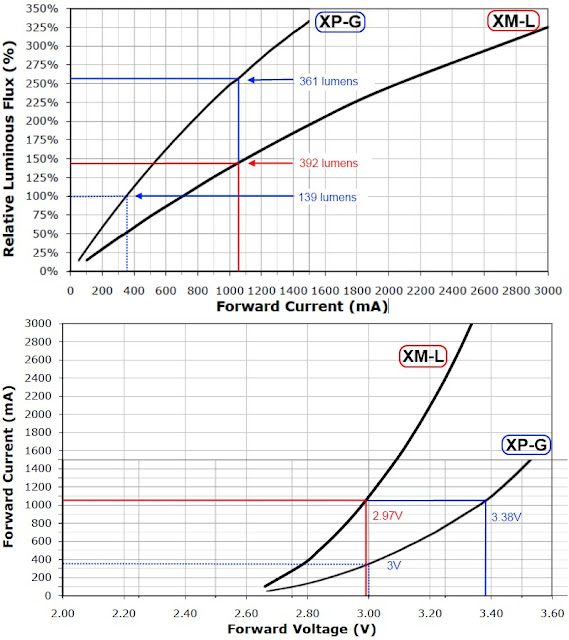mmace1
Enlightened
- Joined
- Sep 1, 2006
- Messages
- 363
Another posted asked why the difference outlined bloew in the Neutron 2xAA and LD20, but never received a satisfactory answer. Say we compare 2 settings of the XP-G Fenix LD20 to the XM-L Thrunite Neutron:
Neutron: 120 for 2.1 hours
LD20: 180 for 2.25 hours
The LD20 with the XP-G is clearly far more efficient. That said different circuits, etc. Maybe the Neutron design is just terrible.
So sayy I compare the Quark 2xAA XP-G and the same model in XM-L. A lot of different outputs which make direct comparison not 100% clear, but say one setting
XP-G: 4.0 lumens/5 days
XM-L: 2.7 lumens/3 days
The XP-G is clearly better, for say another setting:
XP-G 85 lumens/5.0 hours
XM-L 115 lumens/2.5 hours
The XP-G seems more efficient to me. At the very least - the XM-L doe *not* seem clearly more efficient. And in terms of usage - I would pretty strongly argue is worse. An extra 30 lumens on top of 85 (hardly noticeable) is not worth half the runtime.
But then say if I compare the Quark 2xCR123 XP-G and XM-L models - the XM-L is the very clear winner on all output levels.
So...is the XM-L quite a bit more efficient above only certain voltage levels? And below that, the XP-G is more efficient? Or am I confused?
Neutron: 120 for 2.1 hours
LD20: 180 for 2.25 hours
The LD20 with the XP-G is clearly far more efficient. That said different circuits, etc. Maybe the Neutron design is just terrible.
So sayy I compare the Quark 2xAA XP-G and the same model in XM-L. A lot of different outputs which make direct comparison not 100% clear, but say one setting
XP-G: 4.0 lumens/5 days
XM-L: 2.7 lumens/3 days
The XP-G is clearly better, for say another setting:
XP-G 85 lumens/5.0 hours
XM-L 115 lumens/2.5 hours
The XP-G seems more efficient to me. At the very least - the XM-L doe *not* seem clearly more efficient. And in terms of usage - I would pretty strongly argue is worse. An extra 30 lumens on top of 85 (hardly noticeable) is not worth half the runtime.
But then say if I compare the Quark 2xCR123 XP-G and XM-L models - the XM-L is the very clear winner on all output levels.
So...is the XM-L quite a bit more efficient above only certain voltage levels? And below that, the XP-G is more efficient? Or am I confused?
Last edited:




